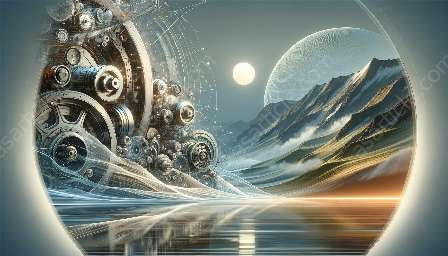Multi-camera sensor fusion is a cutting-edge technology that combines data from multiple camera sensors to provide a unified and enhanced view of the environment. This innovative approach has gained significant attention in various fields, including control systems and dynamics, revolutionizing the way these systems operate and respond to their surroundings.
Sensor Fusion and Control
Sensor fusion plays a critical role in the field of control systems. By integrating data from multiple cameras, each with its unique perspective, sensor fusion enables control systems to obtain a more comprehensive understanding of the environment and make more informed decisions. This enhanced perception is particularly valuable in autonomous vehicles, robotics, and surveillance systems, where precise and accurate control is essential.
Through multi-camera sensor fusion, control systems can benefit from improved object detection, tracking, and estimation of the surrounding environment. By fusing data from multiple cameras, the system can overcome individual sensor limitations and enhance its overall situational awareness, ultimately leading to better control and more effective decision-making.
Real-World Application:
In autonomous vehicles, multi-camera sensor fusion enables the car to perceive its surroundings with greater accuracy and reliability. By combining data from multiple cameras placed at different vantage points, the vehicle can detect obstacles, pedestrians, and other vehicles more effectively, leading to safer and more efficient autonomous driving experiences.
Dynamics and Controls
When it comes to dynamics and controls, multi-camera sensor fusion opens up new possibilities for understanding and interacting with the physical world. By integrating information from multiple camera sensors, the dynamics of a system can be more accurately modeled and controlled, leading to improved performance and responsiveness.
One of the key advantages of multi-camera sensor fusion in dynamics and controls is its ability to capture rich and detailed information about the environment. This wealth of data can be leveraged to enhance the accuracy of control algorithms, optimize trajectories, and improve the overall stability and efficiency of dynamic systems.
Real-World Application:
In industrial automation, multi-camera sensor fusion can revolutionize the control of manufacturing processes. By integrating data from multiple cameras positioned along production lines, manufacturers can achieve precise control over complex operations, leading to improved quality, productivity, and safety.
Conclusion
Multi-camera sensor fusion is a transformative technology that has the potential to redefine the way control systems and dynamics are approached. By combining data from multiple cameras, this innovative approach enhances perception, decision-making, and control, leading to improved performance and safety across various domains.

